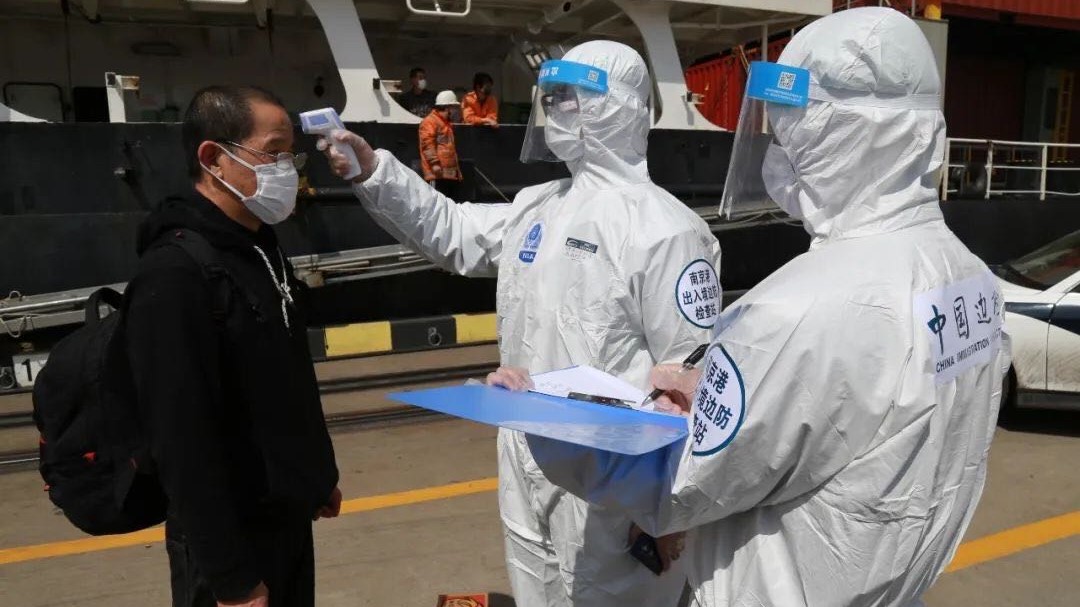You are here
Crew change crisis all at sea in search of a global solution
Crew change crisis all at sea in search of a global solution
Janet Porter 27 Jul 202 https://lloydslist.maritimeintelligence.informa.com/LL1133254/Crew-chang...
Crew change requirements covering ship personnel are changing all the time.
Many crew members are anxious to return home at the earliest opportunity, but others may prefer the coronavirus-free environment of a ship
A technical manager, arranging for the replacement of a ship’s entire crew, describes the ‘nightmare’ of trying to find a port where seafarers could disembark and catch flights home
SEAFARERS working for medium-sized or small companies may find themselves staying on board for months after their contracts expire, given that the crew change crisis shows no signs of being resolved any time soon.
Those companies with global networks and deep pockets are starting to find ways round the situation, even if that means chartering planes or using the company jet to fly seafarers home when no commercial airline services are available, having already determined which ports are the most amenable for crew changes in the current circumstances. Container lines, with their scheduled services, are probably in the best position of all.
Smaller owners, operators and managers, however, are struggling to navigate the myriad of immigration and quarantine demands that are constantly changing, and then can barely afford the onward travel costs for crew members who need to be repatriated.
“It was a nightmare,” according to one source directly involved in the changeover of a ship’s entire crew earlier this month.
Speaking to Lloyd’s List, the industry executive said the problem was made worse by the fact that all those on board had to leave the ship because of the appointment of a different technical manager following a new charter.
For the incoming crew, the procedure was relatively straightforward, as they were tested for coronavirus before they boarded the flight to join the ship, and then again just before getting on the vessel, to make sure they were 100% healthy.
But arranging for a multinational crew to disembark, after up to six months at sea, and then fly home, was far more complicated.
“We tried Singapore, Hong Kong and even Cape Town,” said the manager’s representative, who requested anonymity, but flights back to the Philippines where most of the seafarers live, or other destinations, were few and far between.
Local rules only added to the confusion. In Singapore at the time, for example, a ship was not allowed to sail until the departing crew had all left Changi airport. That was to ensure that if a particular seafarer was unable to fly out for some reason, they would be able to return to the vessel.
That requirement could delay a ship for a week or even much longer, depending on the next available flights for the home-bound crew.
But the requirements covering ship personnel are changing all the time.
In the case of the ship in question, some of the crew were allowed to disembark in Busan, a process that went smoothly. For most of the others, the shipmanager was eventually able to charter a flight from Hong Kong to Manila. But with no small planes available, a large jet had to be hired, at a cost of around $25,000. That represents a huge expense for a small owner or operator.
Even then, the process was not straightforward, as some of the senior officers stayed on the ship until it was handed over to the new technical manager in Singapore. There, the east European officers were able to leave and fly back to Germany, but for a while it looked as if an Indian officer would have to remain on board indefinitely because of the lack of flights to India. Finally, he was able to disembark in Singapore, catch a flight to Doha, and then another to India.
While the big shipmanagers are probably able to work together to consolidate crews on flights, and negotiate discounts from the charter airlines, this is far more difficult for the smaller players, the source said.
“Someone needs to take the lead,” to find an industry-wide solution, he urged, while acknowledging that it was not easy to see where that leadership should come from.
In the meantime, small and medium-sized operators may just say to their crew: “We cannot get you off, so please stay on board.”
And ironically, despite the very real concern about those stranded at sea, their mental well-being, and anxiety for their families, some may nevertheless be content to remain on their ships.
“Do not assume every crew member is desperate to go home,” the person said. “A ship is safe place to be during the pandemic. Crew members are being paid, and they are not at risk [of catching] Covid-19 back home in the Philippines or India”

